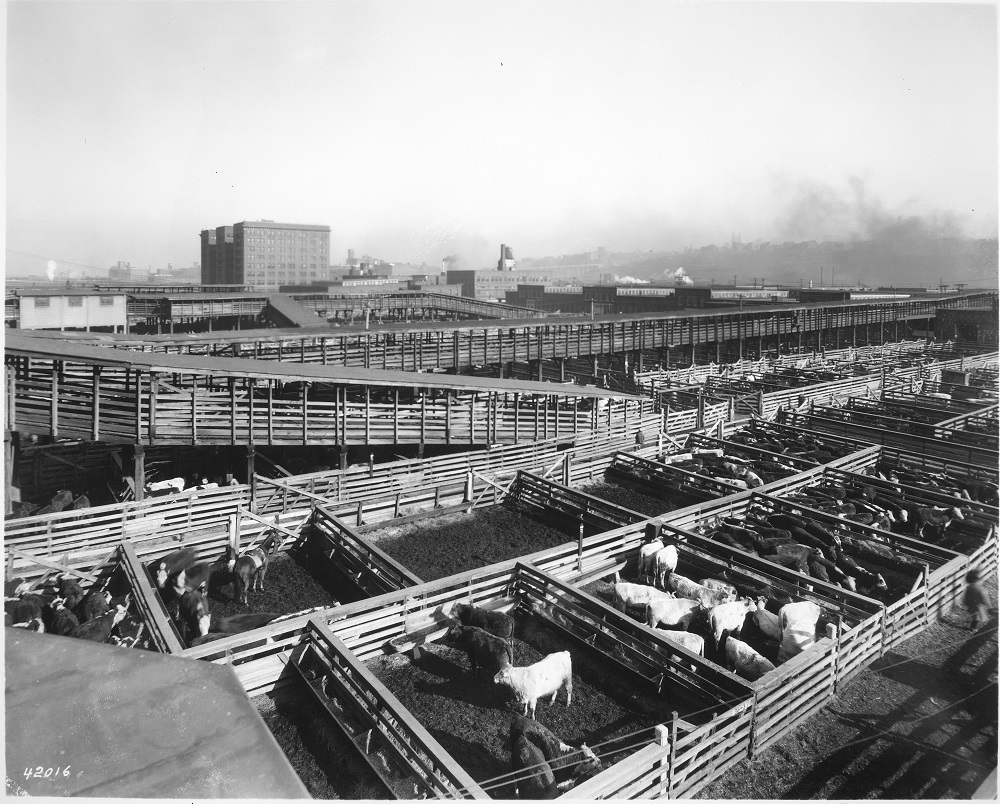Are the Kansas City Stockyards Still Open and Operating?
No. The Kansas City Stockyards, after 120 years in business, closed October 1991.
Although no longer existing, the stockyards and all its concomitant industries should never be forgotten. They contributed greatly to the foundation of Kansas City's development and economy. J. C. Nichols once said, "There never would have been a Country Club Plaza had it not been for the livestock industry."

Established in 1871, the Kansas City Stockyards flourished. Early on it expanded its original 13 acres to 55, added loading docks on both the Kansas and Missouri Pacific tracks and new sheds for hogs and sheep, and developed one of the largest horse and mule markets in the country. Purchase of land on the Missouri side in 1878 made the Yards a bi-state operation.
In 1899, the Hereford breeders in conjunction with the stockyards began what is known today as the American Royal Livestock and Horse Show. The only counterpart in the world at that time was the annual exhibition of the Royal Agricultural Society of England, known as the British Royal. This show furnished the pattern (and name) for the American Royal. The stockyards may be gone, but the American Royal is alive and well, serving as a reminder of the importance of the livestock industry to Kansas City.
By the turn of the nineteenth century, the Kansas City Stockyards was the second busiest in the nation next to Chicago. The 1903 flood and 1917 fire damaged but did not diminish the bustling activity at the Yards. Activity peaked in the '40s when the dollar volume ran $350 million a year. The 1951 flood, however, sounded its death knell. The nearby packing plants suffered severely, and many, instead of rebuilding, closed. Additionally, farmers increasingly began negotiating directly with packers or marketing through smaller regional auction houses.
Today the nine-story Livestock Exchange Building, 1600 Genessee Street, built in 1910 has been renovated and leased to over 70 businesses. The legendary Golden Ox Restaurant and Lounge, "where the steak was born," closed in 2014, although it is scheduled to reopen under new management.
For more information, consult the finding aid for the Kansas City Stockyards Collection, an extensive collection of blueprints, maps, architectural drawings, land abstracts, photos, and correspondence documenting the natural and built environment of the stockyards and West Bottoms.


